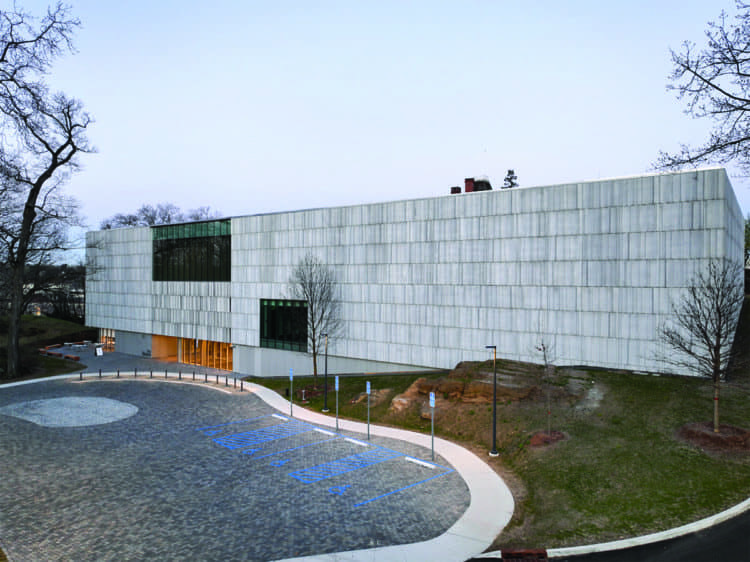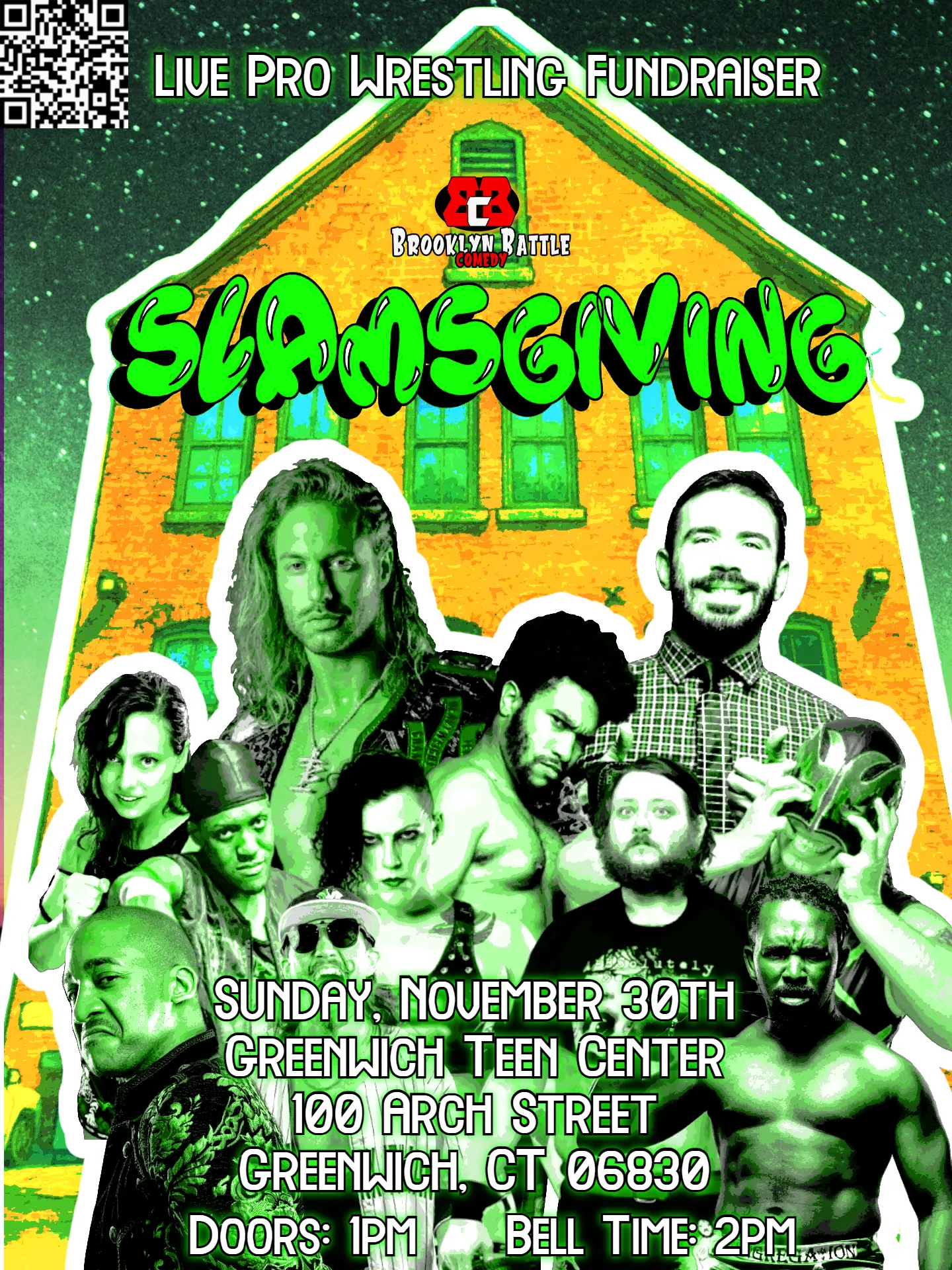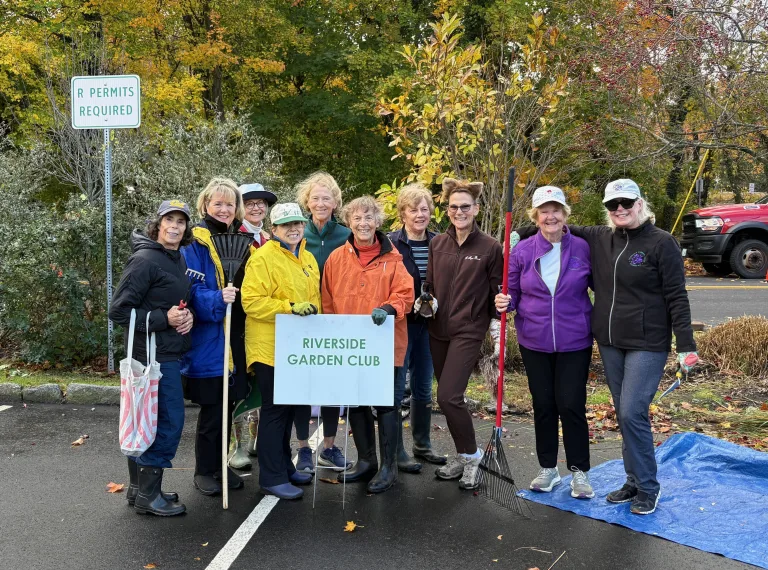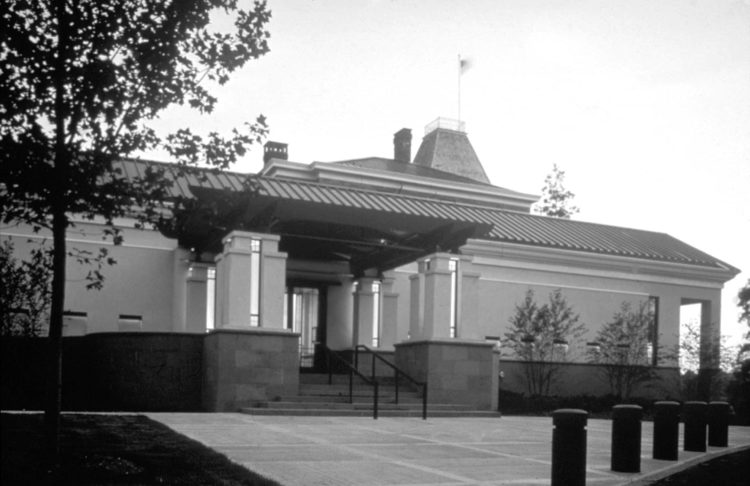
By Mary A. Jacobson
From 1909 to 1978, the leaders of the Bruce Museum sought to oversee the transformation of Robert Moffat Bruce’s 1859 Victorian home into a museum of art, science, and history. This was the mandate stipulated by Mr. Bruce in his will when he bequeathed his home to the Town of Greenwich upon his death in 1909 at the age of 86. The newly reopened and reimagined Bruce Museum of 2023 melds this original conceptual challenge with a state-of-the-art edifice for the twenty-first century.
In 2007 the Oral History Project conducted a series of interviews which were compiled into a book entitled “The Bruce Museum – A Century of Change.” These interviews chronicle the stories of leaders associated with the Bruce Museum from 1918-2007 in their own words and according to their own unique perspectives and recollections.
John Clark directed the Bruce Museum from 1979 to 1995. He had previously worked as Curator of Geology at the Morris Museum of Arts and Sciences in Morristown, New Jersey. From his perspective, the “museum had a lot of potential but seemed to have no storage. It seemed to have everything out on exhibit… ‘The Good, the Bad, and the Ugly.’” He noted that in Greenwich, “There was a strong interest in good quality programming and exhibitions; whether it was to be a children’s museum, an art museum, a science museum.”
During Clark’s tenure, the decision was made to close the zoo part of the museum. Clark stated, “It was decided that the Bruce Museum wasn’t a zoo . . . When I first came here, we had three monkeys and three parrots.” New placements were found for them “in spite of the fact that one of the birds swore like a drunken sailor!”
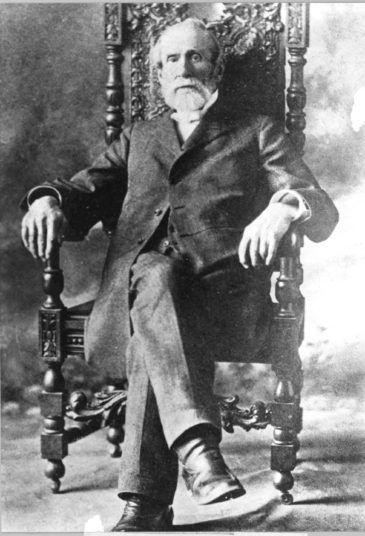
As the museum continued to raise its profile in Greenwich, it added to its subsidy base from the town with growing community support from the Bruce Associates. Over time, according to John Clark, it became apparent that the museum building was in need of renovation. “It hadn’t been updated or upgraded…There was a black-and-white checkerboard tile floor, like back in the fifties. One gallery was painted pink, the next one was painted canary yellow, and the next, robin’s egg blue…Most of the windows were boarded up and painted battleship gray.”
Clark stated that seven million dollars was raised, and ground was broken for the construction project in December of 1992. To celebrate the onset of the project, “We closed the old building (now stripped back to the original walls) with something called a bare-bones party…We let people graffiti the walls. They left their own personal messages. And it was just a fun farewell.”
Hollister Sturges, director from 1995 to 2000, was the first museum director with an art or art history background. During his tenure, the museum received accreditation from the American Association of Museums. “I arrived at a moment of great opportunity because the new (renovated) museum had opened in 1993…I think one mandate was for a strong art program.”
Over time, “the budget expanded, the audience almost doubled…We became the second most visited art museum in Connecticut, after the Wadsworth Atheneum.” Sturges evidenced pride in the strides made during his tenure to upgrade the art exhibitions. However, he stated, “I think the biggest problem in the end for me was the transition from a volunteer-led period to a professional staff-led period. That was a transition that was taking place during my tenure.”
Homer McK. Rees, a retired businessman, acted as interim director from 2000-2001 to guide the museum while a new director was sought. “It was perfectly true that I wasn’t an art professional or a science professional, but I had run businesses before….and just simply applied the same principles to the museum that I would to any business.” A goal was to “change the mindset of the board from being a managing board to a governing board.” At the conclusion of his tenure, Rees reflected that working at the Bruce Museum “was one of the most, if not the most, rewarding experiences of my business career.”
In 2001, Peter Sutton became the museum’s first executive director. He hailed from a number of curatorial and directorship positions in the world of art. Interviewed in 2005, he stated, “We’ve managed to balance the budget and improve the reputation of the institution and raise its profile.” With fourteen to sixteen shows a year, 600 annual educational programs, 20,000 yearly schoolchildren visits, “Something is happening all the time, every day, almost every hour of every day.” Sutton stated that three-quarters of the museum’s budget must be privately raised “and it’s wonderful that it all comes to this public municipal institution.” Sutton’s vision for the future included an expansion to bring more widespread recognition of this community gem.
The “new” Bruce Museum opened to the public on April 2, 2023, under the leadership of the Museum’s executive director since 2019, Robert Wolterstorff, who hails from the Bennington Museum in Vermont. This impressive, reimagined space combines art, science, education, and community with expanded collection storage, permanent and changing art gallery venues, a new entrance lobby, café and lecture hall, doubling its size from 30,000 to 60,000 square feet.
Surely Robert Bruce would be amazed and proud to see what his 1859 home, donated to the Town of Greenwich in 1909, has become, one hundred and fourteen years later. His desire, that it be used “as a natural history, historical and art museum for the use and benefit of the public” has been more than realized and will be enjoyed by thousands more in the years to come.
The collection of interviews entitled “The Bruce Museum – A Century of Change” may be read in its entirety at Greenwich Library and is available for purchase at the Oral History Project office. The OHP is sponsored by Friends of Greenwich Library. Visit the website at glohistory.org. This blog is not intended as an historical account. Our narrators’ recollections are personal and have not been subject to factual scrutiny. Mary Jacobson serves as blog editor.
